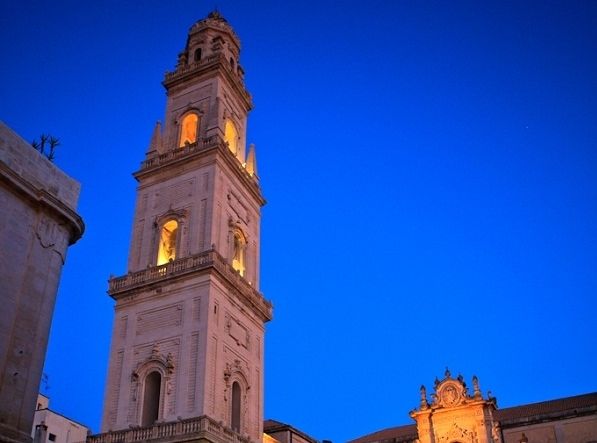From tomorrow the bell tower of the Cathedral of Lecce will be more usable thanks to the panoramic lift created with the regional facilities of Title II Chapter 6
Date:
13/05/2022

With the measure generated investments of over 753 million euros and employment increases of 3,673 new units
From tomorrow, May 14, in Lecce the panoramic elevator that allows you to climb the bell tower of the Duomo enjoying a breathtaking view.
It will be possible to use it every day of the week from 10 am to 8 pm.
To make all this possible, the facilitations of the regional measure Title II Chapter 6 of the Competitiveness Section, managed by Puglia Sviluppo as an intermediate body.
With a project initially planned for more than 851 thousand euros of which over 303 thousand euros of contribution (including interest and plant account), and today reached over one million euros, the ArtWork Social Cooperative of Lecce, which operates in the field of cultural heritage and activities and is committed to the protection, enhancement and safeguarding of ecclesiastical assets, has enhanced the bell tower by designing and building a panoramic elevator equipped with three glass walls, with a capacity of 5 people, and monitors. Panoramic outings were planned on the first, second and third levels with the installation of panoramic binoculars, audio totems and historical information panels, with the experiential visit planned at 43 meters high. The investment has also allowed the increase in employment with the hiring of 5 new units.
"With the realization of this project – said the Councilor for Economic Development of the Puglia Region – we see before our eyes the enhancement of an asset of great value that characterizes, with its over 68 meters high, the architectural complex of Piazza Duomo, dominating the entire historic center. From tomorrow Lecce and tourists will be able to enjoy it every day of the week. But we also see a public-private collaboration between the Puglia Region and a small business, through a facilitation tool, Title II Chapter 6, which recovers the existing real estate assets. An instrument that through the restoration and conservative rehabilitation of buildings of artistic and historical-architectural interest and of farms, trulli, towers and fortifications, has made it possible to restore and make usable pieces of a vast and above all unique heritage of our region. The regional measure has allowed us to save many of them from degradation and has helped to slow down a process of overbuilding that seemed unstoppable. The instrument is generating investments of over 753 million euros and employment increases of 3,673 new units. To date, thanks to this measure we have recovered 400 buildings of historical and cultural value, but the intervention is active and still available for small and medium-sized enterprises in the sector, interested in investing in Puglia".
The measure Title II Tourism – Chapter 6, operation and results
The intervention allows to expand, modernize and restructure the tourist-hotel facilities (including widespread hotels), but also to create or renew bathing establishments and tourist landings, to create hotel facilities, renovating properties of historical and architectural value.
It facilitates investments between 30 thousand and 4 million euros for medium-sized enterprises and between 30 thousand and 2 million for micro and small enterprises.
With 1,481 requests as of 13 April 2022, the instrument is generating investments of over 753 million euros (of which 273 million in benefits requested) and employment increases for 3,673 new units, while the employment at full capacity is expected to be 11,719 units.
Together with Integrated Facilitation Programmes (PIA Turismo) it has had the effect of contributing to the tourist boom of Puglia by safeguarding and renewing the existing heritage and favoring the deseasonalization, through the construction of over 9,000 more beds and 4,000 new rooms and the recovery of 400 buildings of historical and cultural value.

